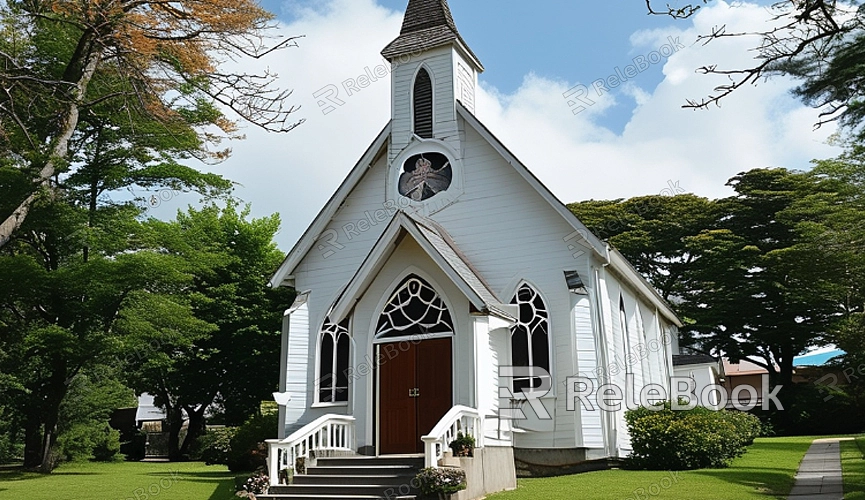How to Create a 3D Model of a Church?
In modern design and architecture, the application of three-dimensional modeling technology is becoming increasingly widespread. Creating a 3D model of a church not only showcases artistic creativity but also provides essential support for various industries, including architectural design, game development, and animation production. This article will detail how to create a 3D model of a church, covering the necessary tools, modeling steps, tips, and considerations to help readers complete this project.

Determine the Design Plan
Before starting the 3D modeling process, the first step is to determine your design plan. This phase is crucial as it will influence the direction and outcome of your modeling efforts. You can choose to model an existing church or design an entirely fictional one.
1. Research and Gather Information
Regardless of whether you select a real church or opt for a fictional design, researching and gathering relevant information is essential. Explore online resources, books, and documentaries to learn about different church architectural styles, structures, and details. Consider focusing on classic churches, such as Gothic or Baroque styles, which often possess significant artistic and architectural value.
2. Sketch the Design
After gathering enough information, begin sketching your design. You can either draw by hand or use design software to outline the floor plan and elevation of the church. Sketching not only helps clarify your ideas but also provides an important reference for the modeling process.
Choose the Right Modeling Software
Selecting the appropriate modeling software is a critical step in creating a 3D model. There are numerous excellent 3D modeling tools available, including the following:
1. Blender
Blender is a powerful open-source software that is free to use, making it suitable for everyone from beginners to professionals. It supports various modeling techniques, including polygonal modeling, sculpture, and surface modeling, making it ideal for complex church designs.
2. SketchUp
SketchUp is a user-friendly modeling tool particularly well-suited for architectural design. Its intuitive interface and extensive plugin library enable users to quickly learn and complete modeling tasks.
3. AutoCAD
AutoCAD is a classic software in the architecture industry, mainly used for 2D design and 3D modeling. Although it has a steeper learning curve, its precision and professionalism make it highly regarded in the architectural field.
Start Modeling
After determining your design plan and selecting the software, it’s time to dive into the actual modeling process. Follow these steps:
1. Create Basic Shapes
In the modeling software, start by creating the basic shapes of the church. This includes the main structural elements like the building's body, roof, and towers. You can use simple geometric shapes (like cubes and cylinders) to construct the initial framework.
2. Add Details
Once the basic shapes are completed, start adding details. This phase is the most creative part of modeling, where you can use various features of the modeling tools to create complex elements such as windows, doors, and sculptures. These details will enhance the realism and artistic quality of the church model.
3. Adjust Proportions and Textures
After finishing the model's construction, proceed to adjust proportions and apply textures. Ensure that all parts of the model are proportionate, and use appropriate textures to add surface effects. You can utilize downloadable texture materials from the internet or photographs you've taken to achieve realistic effects.
Rendering and Output
Once the modeling is complete, the final step is rendering and outputting the model. This process will determine the visual quality and presentation method of the final model.
1. Set Up Lighting and Camera
Before rendering, it's crucial to set up appropriate lighting and camera angles. The placement of lighting can significantly affect the model's highlights and shadows, while the camera angle dictates the viewer's perspective of the model.
2. Render the Model
With the lighting and camera set, proceed to render the model. The rendering time will vary depending on the complexity of the model and the performance of your computer. Once completed, you can generate static images or animations for display and sharing.
Creating a 3D model of a church is a challenging yet rewarding endeavor. From determining the design plan to the final rendering, every step requires careful planning and execution. By mastering the relevant software tools and modeling techniques, you can greatly enhance the efficiency and effectiveness of your modeling process. We hope this article helps you make progress in your 3D modeling journey. Finally, feel free to visit the Relebook website to download more 3D models and textures to aid your creative work.
FAQ
How long does it take to create a church model?
The time it takes to create a church model varies from person to person, primarily depending on the complexity of the model and the individual's skill level. Generally, the entire process, from sketch design to final rendering, can take anywhere from a few days to several weeks.
What kind of computer specifications do I need?
Creating 3D models typically requires a relatively powerful computer, especially during the rendering phase. It is advisable to use a computer with a strong graphics card and processor to improve modeling and rendering efficiency.
Where can I find reference materials for church models?
You can find a wealth of reference materials for church models on architecture-related websites, design platforms (such as Pinterest and Behance), and in specialized books. Additionally, visiting museums or churches in person to take photographs can also be beneficial.
Can I use the model for commercial purposes?
Whether you can use the model for commercial purposes depends on the licensing terms of the software and materials you use. Always ensure you follow the relevant copyright regulations when using materials.

